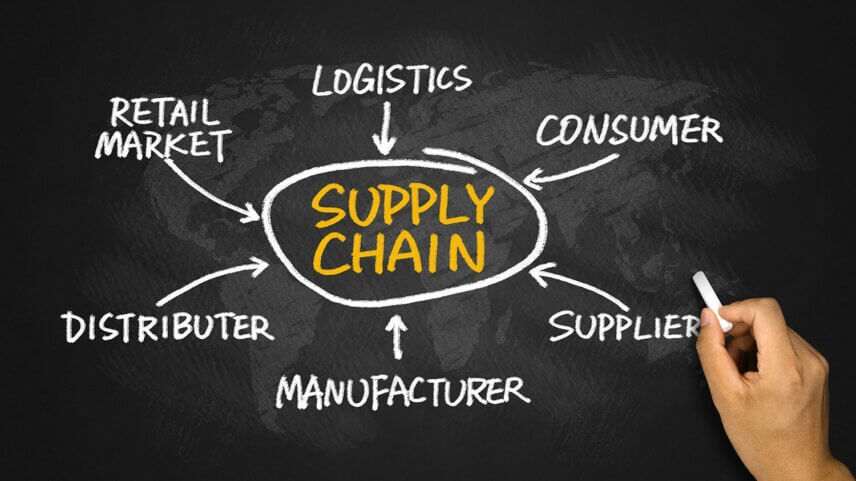 With soaring inflation eroding personal spending power, supply chains have become a mainstream concern for Americans. Not only are media reports focused on supply chain issues, but the White House has also identified supply chain disruptions as a major force driving price increases.
With soaring inflation eroding personal spending power, supply chains have become a mainstream concern for Americans. Not only are media reports focused on supply chain issues, but the White House has also identified supply chain disruptions as a major force driving price increases.
As economic analysts and political pundits debate the finer points of prevailing supply chain problems, US consumers are caught in an expensive cycle, feeling the financial pinch from supply irregularities. And to digest the scope and severity of the problem, it is important to first distinguish between key individual elements involved in bringing CPG or consumer packaged goods to market.
Logistics and supply chain are two distinct disciplines within the complex apparatus required to keep finished goods and raw materials moving. Though the two concepts are often lumped together as a single concern, logistics and supply chain are not exactly the same thing.
Supply Chain Takes Center Stage
While supply concerns may seem to have emerged overnight, complex relationships have long posed challenges between suppliers, manufacturers, packaging companies, shippers, warehousing facilities, wholesalers, retailers, and other supply chain stakeholders. The system faltered, and conditions rapidly worsened as the COVID-19 pandemic exacerbated existing difficulties and brought new problems to the surface.

Global shortages and production slowdowns quickly rippled throughout US distribution channels, resulting in bare shelves and rising prices. In response, voices have grown louder, calling for greater supply chain security and reduced US dependence on offshore suppliers. With every aspect of manufacturing and distribution under scrutiny, lasting supply chain improvements are closely tied to reliable logistics solutions.
A recent Michigan State University article includes input from industry insiders, sharing their views on the relationship between logistics and supply chains. According to the author and survey participants, supply chain management is most accurately defined as a comprehensive undertaking linking and coordinating various processes for competitive advantage.
Among the disciplines associated with supply chain management, logistics and distribution are prominent supply chain sub-processes. Others include:
- Purchasing
- Sourcing
- Packaging
- Product Development
- Service
- Manufacturing
- Operations
Each of these supply chain functions is ultimately involved in the sourcing, processing, and delivery of goods to consumers. A well-articulated supply chain efficiently manages activities between various entities and organizations working together delivering finished products to consumers. Among the key elements required to maintain a consistent flow of consumer goods, workable logistics solutions keep goods moving at the proper rate.
Logistics Support Healthy Supply Chain
A healthy supply chain network connects suppliers and their customers, as well as linking producers with packagers and other partners. A well-managed supply chain results in manufacturing and distribution efficiencies, which ultimately adds value to finished products. Logistics is one discipline supporting a robust supply chain, adding value with cost-effective transportation and storage solutions.
The Council of Supply Chain Management Professionals acknowledges logistics as an essential arm of the supply chain, responsible for the movement and storage of goods, services, and related information. By addressing internal movement and storage needs, logistics moves goods from the point of origin all the way to the point of consumption. Effective logistics solutions also help to synchronize the supply chain, relying on warehousing, packaging, transportation, and other activities to properly position products within the marketplace.
In practice, successful logistics solutions deliver the proper quality product, on-time, to the right location, and at the best possible price. Logistics is divided into two distinct sub-processes, addressing inbound and outbound activities.
- Inbound Logistics — On the inbound side, logistics activities assist with obtaining, handling, storing, and transporting materials and supplies.
- Outbound Logistics — Outbound logistics activities include solutions responsible for collection and distribution processes and moving goods out to consumers.
Although logistics management is heavily focused on moving freight, a wide range of activities supports inbound and outbound logistics, including warehousing, packing and fulfillment, managing inventory, and maintaining a balance between supply and demand.
Evolving Logistics and Supply Chain Demands
In some ways, logistics is seen as the old standard, while supply chain management is viewed as its comprehensive cohort, capable of accounting for not only logistical concerns but also for the additional processes required by the modern marketplace.
Noted differences exist between logistics and supply chain management, and the disciplines are complementary and interconnected. Some distinctions include:
- Logistics management is focused on maintaining and moving goods in and out of an organization, while supply chain management is responsible for coordinating and managing all of the partners and processing operations within the supply chain.
- Effective supply chain management creates efficiencies and competitive advantages, while the overarching function of logistics is delivering goods that meet customer requirements.
- Supply chain management responds to various aspects of the supply chain, addressing logistics as a sub-process integral to the seamless flow of materials and finished goods.
- With roots in military movement, the concept of logistics has been around longer than the newer notion of comprehensive supply chain management.
Although logistics and supply chain are often referenced interchangeably, they are not one and the same. While logistics specifically encompasses the movement, storage, and positioning of raw materials and finished goods, supply chain activities go further, linking and coordinating various processes responsible for bringing consumer packaged goods to market.
